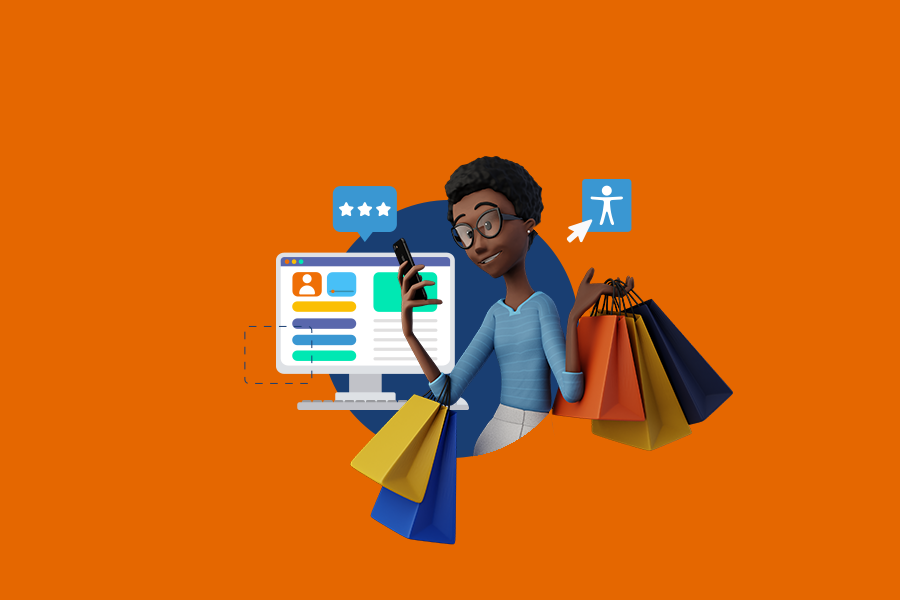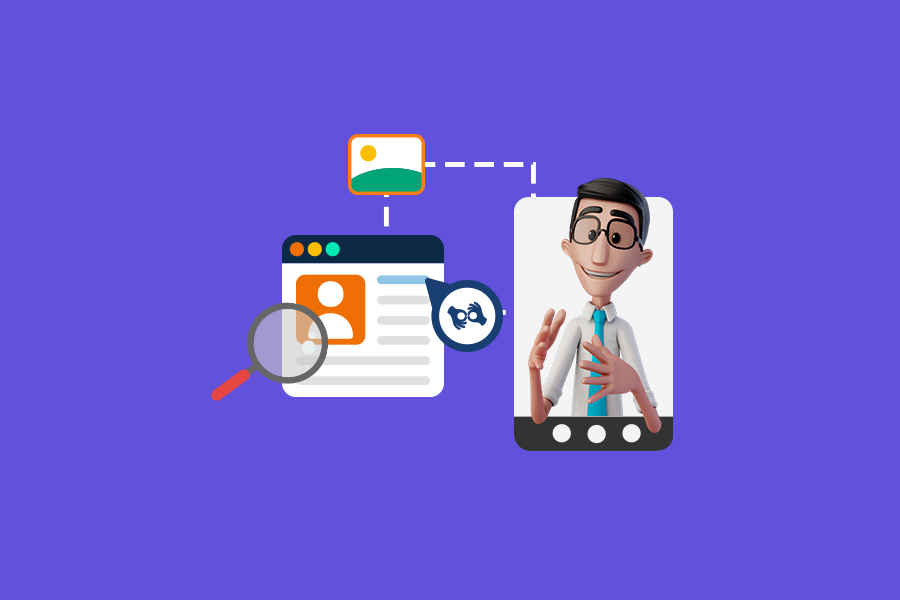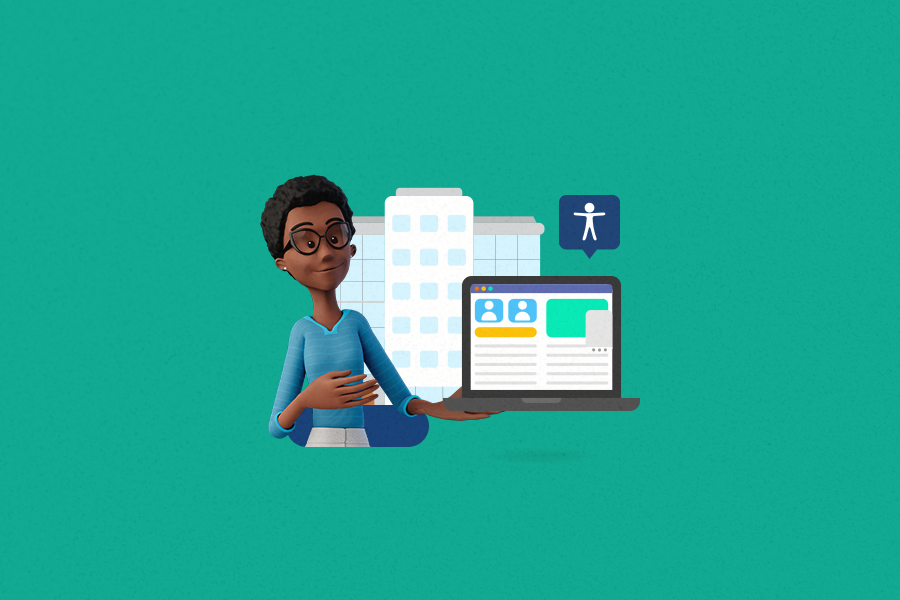
How to improve e-commerce sales with accessibility

In the increasingly digitized world we live in, accessibility has already become a fundamental aspect to ensure that all users have a positive experience on the internet, including those with physical, cognitive, or sensory disabilities.
When it comes to e-commerce, the famous online commerce, accessibility not only improves the user experience but can also boost sales and customer loyalty.After all, who has never given up shopping on a website because they found its interface confusing or because it was slow to load?
These are common occurrences for those who do not have any disabilities, and they are just the tip of the iceberg for people with disabilities. In any case, these are some of the experiences that harm the results of any online store.
So come explore with us further the importance of accessibility in e-commerce and understand what are the main barriers faced by users. Oh, and to give you that extra help, we have also gathered some practical tips to make your e-commerce more accessible!
The importance of accessibility in e-commerce
Accessibility in e-commerce is essential to ensure that all users, regardless of their abilities or limitations, can navigate, search, select products, and make transactions effectively and autonomously.
Today, in the United States, there are more than 61 million inhabitants with disabilities. If we think on a global scale, the population with disabilities has a disposable income of $8 trillion. That is a huge financial movement for you not to pay attention to, is it not?
In this way, when an e-commerce website is accessible, it opens its doors to a much broader audience, managing to include people with visual, auditory, motor, or cognitive disabilities.
Besides, an accessible shopping experience promotes a positive brand image and demonstrates a real commitment to inclusion and equality.
Main accessibility barriers in e-commerce
There are several barriers that can hinder accessibility on an e-commerce website, which may even come as a surprise to those who are not very familiar with this universe.
Some of the most common ones include the lack of adequate product descriptions for users with visual disabilities. This includes both the product description itself and the alternative texts for its images.
For example, put yourself in the shoes of someone with low vision: is it easier to understand what the product is when the description is “colorful hippie t-shirt” or “tie-dye t-shirt in red, green, and yellow colors”?
Also, the presence of buttons and links that are not easily identifiable and clickable makes navigation very difficult for users with motor disabilities. Meanwhile, long and complex forms make completing a purchase much more complicated for users with cognitive disabilities.
Lastly, another relevant barrier is the lack of accessibility in videos, which occurs when they are without captions, descriptions, or ASL (American Sign Language) interpretation for deaf users or those with hearing disabilities. Consequently, these types of audiovisual content become impossible to be consumed and understood by this audience.
How can I make my e-commerce more accessible?
The good news is that even if your e-commerce is inaccessible today, all is not lost! Fortunately, there are several practices you can implement to make your online store more accessible:
- Ensure that your website is compatible with screen readers: this involves the inclusion of detailed product descriptions, explanatory titles, and a well-defined page structure;
- Facilitate navigation: use responsive design and simple navigation menus to facilitate interaction, especially on mobile devices;
- Provide contrast options: ensure that text and visual elements have sufficient contrast to be easily distinguishable;
- Offer various forms of interaction: allow users to navigate and interact with your website using different methods, such as keyboard, mouse, and touchscreen;
- Test regularly: perform usability tests with users with different types of disabilities to identify and correct potential accessibility issues.
How to evaluate the accessibility of your e-commerce
There are several tools available that can help you assess the accessibility of your e-commerce website. Some of them include:
- Google Lighthouse: an open-source tool from Google that automates tests by checking the overall quality of your website, including accessibility. It generates detailed reports with accessibility scores;
- WAVE (Web Accessibility Evaluation Tool): a browser extension that provides a detailed analysis of your website’s accessibility, highlighting issues and suggesting improvements;
- Axe Accessibility: an accessibility testing tool that can be integrated into your development workflow to identify and fix issues in real-time.
Understanding your audience: accessibility for everyone
When developing accessibility strategies for your e-commerce, it is important to remember that accessibility benefits everyone, not just people with disabilities.
For example, captions in videos can be very useful for those who prefer to watch content without sound or are in a very noisy place. Meanwhile, large and well-spaced buttons may be easier to click on mobile devices.
Assistive technologies: tools to improve e-commerce accessibility
In addition to ensuring that your website is accessible according to some best practices, it is also important to consider the use of assistive technologies that can further facilitate the user experience. Here are some examples of these technologies:
- Screen readers: software that converts text into speech, allowing users with visual disabilities to navigate websites;
- Virtual keyboards: an alternative for users with motor disabilities who have difficulty using a physical keyboard;
- Voice controls: allows users to control the computer or mobile device using voice commands;
- Automatic Sign Language translators: enables automatic translation of written content on a website into Sign Language, so that deaf people who communicate primarily in ASL can access information visually and comprehensively in their native language.
Conclusion
Investing in accessibility is a smart decision for any e-commerce. Making your online business accessible can significantly improve the user experience, boost sales, and promote a positive brand image.
By following the best practices we recommend and using the right tools, you will be creating an inclusive environment that benefits everyone. Oh, and always remember that accessibility is not just a responsibility but also an opportunity to innovate and stand out in the market.
Do you want to start investing in the accessibility of your e-commerce? Then learn more about the Hand Talk Plugin! Our digital accessibility plugin automatically translates texts into Sign Languages, while also featuring many other accessible resources that assist an even larger audience. Talk to Hand Talk experts!


